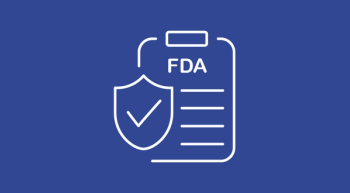
Regorafenib Plus Pembrolizumab Shows Promise in Treating Advanced HCC
A study of 2 cohorts shows that the combination of regorafenib and pembrolizumab is effective in generating anti-tumor activity in patients with HCC.
Patients with advanced hepatocellular carcinoma (HCC) demonstrated encouraging anti-tumor activity with a disease control rate (DCR) of 91% when treated with regorafenib (Stivarga) in addition to pembrolizaumb (Keytruda), according to a presentation at the 2021 virtual ASCO Annual Meeting.1 No new safety signals were reported.
Researchers looked at combing the 2 individual therapies, previously approved as monotherapies for patients with advanced HCC who progressed on sorafenib (Nexavar), in a phase 1b study (NCT03347292) that evaluated 35 patients with advanced HCC who had no prior systemic therapy. Treatment started with 120 mg of regorafenib daily on a 3 weeks on, and 1 week off schedule, and 200 mg of pembrolizumab given intravenously every 3 weeks. Treatment was planned to either escalate to 160 mg or lower to 80 mg of regorafenib, but only an exploratory cohort received 80 mg due to a high volume of dose modification in the 120 mg cohort. At the data cut off, 50% of the patients in the 80 mg cohort remained on treatment.
Response rates among both cohorts were similar; 31% of patients had an objective response rate (ORR) in the 120 mg cohort and patients in the 80 mg cohort had an ORR of 32%. Moreover, the 80 mg cohort had a median follow up of 10 months and displayed a median progression-free survival (PFS) of 6.9 months and a median time-to-progression (TTP) of 6.9 months, with insufficient follow up for overall survival (OS) data. In the 120 mg cohort, after a median follow up of 13.9 months, median OS, PFS, and TTP, was 26.5 months, 7.5 months, and 8.1 months, respectively.
Out of 32 evaluable patients in the 120 mg cohort 31% of patients had a partial response and 56% had stable disease with a DCR of 88%. Twenty-two patients in the 80 mg cohort had a higher DCR at 91% with 18% showing partial responses and 73% had stable disease.
“Overall, 57 patients were treated,” said Anthony B. El-Khoueiry, MD, from the Keck School of Medicine of USC and lead investigator of the study, at a virtual presentation of the data at the 2021 ASCO meeting.2 “At baseline, most patients had an ECOG Performance Status of 0. All patients had Child-Pugh A and approximately 80% were BCLC stage C. And two-thirds had extrahepatic disease and/or microvascular invasion.”
In comparing the 2 cohorts, the 80 mg cohort had a more favorable safety profile and lower rates of dose reductions and treatment interruptions, according to El-Khoueiry. In the 120 mg cohort, two-thirds of patients had a treatment-emergent adverse event (TEAE) that led to interruption of treatment or dose reduction. Grade 3 or 4 TEAE occurred in 86% of patients in the 120 mg cohort compared with50% in the 80 mg cohort. The most common TEAE in both cohorts were AST increase (23% compared with9%), lipase increase (20%/5%), ALT increase (17%/9%), and hypertension (17%/9%). The majority of TEAE were linked with regorafenib in the 120 mg cohort at 66% of TEAEs compared with37% in pembrolizumab, however, in the 80 mg cohort 41% of grade 3 TEAEs were related to regorafenib compared with 23% in pembrolizumab.
“In Panel B, there was no apparent association between regorafenib exposure and objective tumor response, and there was substantial overlap in individual exposures,” explained El-Khouiery when talking about an additional biomarker analyses researchers completed. “The biomarker analyses were limited by small sample size and the lack of power to compare the 2 dose levels. Nonetheless, we did see a decrease in the ratio of CD4-positive to CD8-positive T cells from baseline, which was more apparent in the 120 mg cohort.”
References
- El-Khoueiry A, Kim R, H W, et al. Updated results of a phase 1b study of regorafenib (REG) 80 mg/day or 120 mg/day plus pembrolizumab (PEMBRO) for first-line treatment of advanced hepatocellular carcinoma (HCC). J Clin Oncol. 2021;39(suppl 15; abstr 4078). doi: 10.1200/JCO.2021.39.15_suppl.4078
- El-Khoueiry A, Kim R, H W, et al. Updated results of a phase 1b study of regorafenib (REG) 80 mg/day or 120 mg/day plus pembrolizumab (PEMBRO) for first-line treatment of advanced hepatocellular carcinoma (HCC). Presented at: 2021 ASCO Annual Meeting; June 4-8, 2021; Virtual. Abstract 4078.
This article was originally posted on OncLive as
Newsletter
Knowledge is power. Don’t miss the most recent breakthroughs in cancer care.































































































